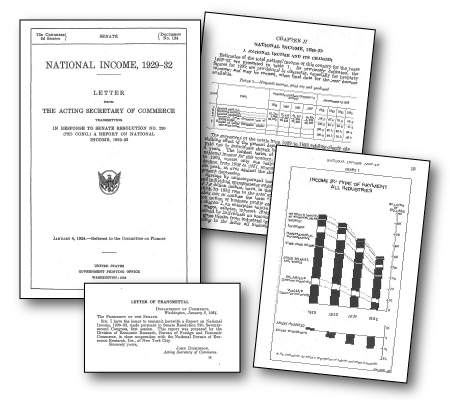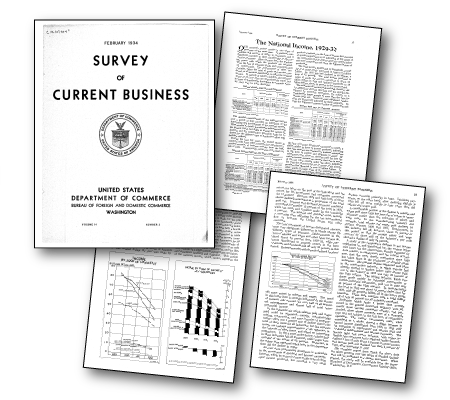The Evolution of U.S. National Income Accounting
During the depths of the Great Depression, economists and statisticians at the Department of Commerce were hard at work quantifying the U.S. economy. Building on the data gathered for the first issue of the Survey of Current Business in 1921, the Bureau of Foreign and Domestic Commerce’s (BFDC) collection of vital statistics was an ongoing endeavor, as was how best to use and present the statistics.
In 1932, U.S. Senator Robert La Follette, in Senate Resolution 220, directed the BFDC to produce a report on U.S. national income for the period 1929–1931. This initiative was driven in part by the lessons learned during World War I, when a lack of data made economic planning difficult, and the ongoing crisis of the Great Depression. La Follette believed increased federal spending was a key to coming out of the Great Depression. How best to allocate these funds required more information on the economy than was currently collected.
In January 1934, Acting Secretary of Commerce John Dickinson presented the report, National Income 1929–32, to the U.S. Senate. Economist Samuel Kuznets of the National Bureau of Economic Research (NBER) managed the BFDC study with the support of NBER and with the assistance of, among others, economists Robert F. Martin, Robert R. Nathan, and Arthur Burnstan. The individuals who produced this report set a high standard for timely, accurate, and objective data—one that the Bureau of Economic Analysis (BEA) strives to emulate to this day.

Cover and pages from National Income, 1929–32

Cover and pages from the February 1934 Survey of Current Business
“Year in, year out the people of this country, assisted by the stock of goods in their possession, render a vast volume of work toward the satisfaction of their wants. Some of this work eventuates in commodoties, such as coal, steel, clothing, furniture, automobiles; other takes the form of direct personal services, such as are rendered by physicians, lawyers, Government officials, domestic servants, and the like.”
– National Income, 1929–32
The remarkable report, close to 270 pages and containing over 200 detailed statistical tables and numerous charts, was the first U.S. economics report of its kind and represented a groundbreaking collaboration between the federal government, NBER, trade associations, and large businesses. The month after it was submitted to the Senate, the Survey produced a summary of the report in its February 1934 issue.
Seventy-three years after National Income, 1929–32 was presented to the U.S. Senate, BEA economists Rosemary D. Marcuss and Richard E. Kane reflected on the origins of national income accounting and its early evolution in a 2007 Survey article “U.S. National Income and Product Statistics: Born of the Great Depression and World War II.” As Marcuss and Kane stated:
“The story of the first U.S. national income and product statistics illustrates how scholarly debates about the definitions of ideal measures gave way to the compromises required to produce real-world economic statistics when the need for such statistics had become critical. Then, as the workings of the economy became better understood—in part, through the use of statistics—economic theory advanced. And, as improved sources of data on incomes, production, and sales were provided, the statistics were improved in turn.”
BEA is pleased to reprint this article, which explains many of the factors that influenced this development, as well as the report National Income, 1929–32, in its entirety, along with the Survey's summary of the report in this centennial issue of the Survey.